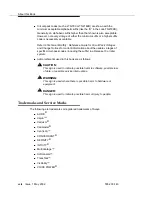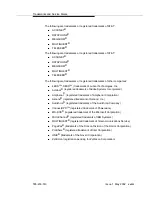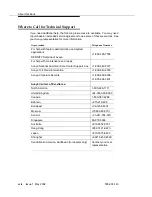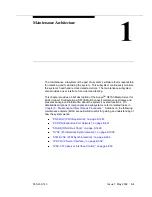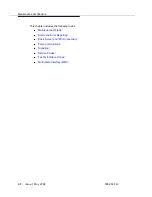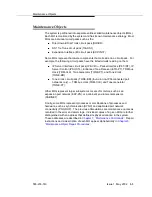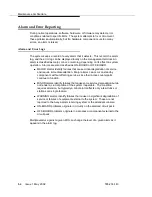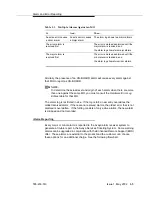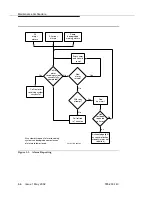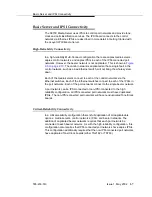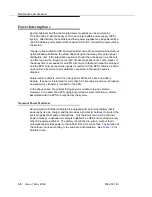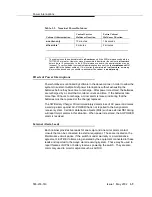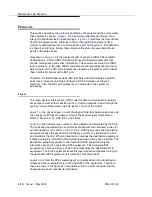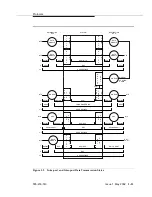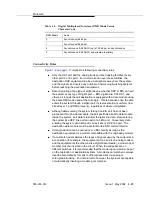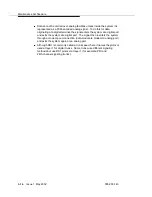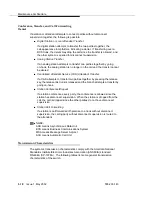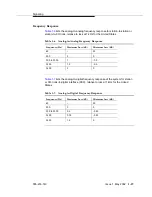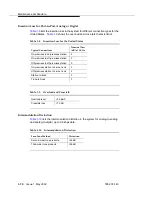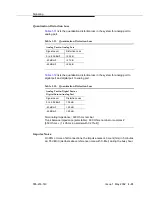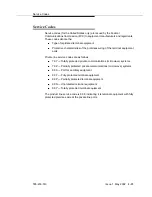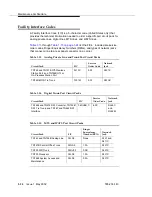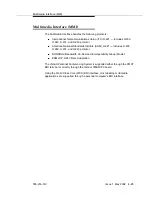
Maintenance Architecture
555-233-143
1-10
Issue 1 May 2002
Protocols
This section describes the protocols handled by the system and the points where
these protocols change.
is a pictorial guide through intra-port and
inter-port data transmission state changes.
illustrates the flow of data
from DTE equipment, like a terminal or host, through DCE equipment, like a
modem or data module, into a communications port on the system. The data flow
is shown by solid lines. Below these lines are the protocols used at particular
points in the data stream.
Not shown in
is the treatment of D channels in ISDN-PRI and -BRI
transmissions. PRI and BRI D channels transport information elements that
contain call-signaling and caller information. These elements conform to ISDN
level-3 protocol. In the case of BRI, the elements are created by the terminal or
data module; for the PRI, the elements are created by the system, which inserts
them into the D channel at the DS1 port.
Therefore, for ISDN transmissions, BRI terminals and data modules, and DS1
ports insert, interpret, and strip both layer-2 DCE information and layer-3
elements. Also, the DS1 port passes layer-3 elements to the system for
processing.
Layers
The Open System Interconnect (OSI) model for data communications contains
seven layers, each with a specific function. Communications to and through the
system concern themselves only with layers 1 and 2 of the model.
Layer 1, or the physical layer, covers the physical interface between devices and
the rules by which bits are passed. Among the physical layer protocols are
RS-232, RS-449, X.21, DCP, DS1, and others.
Layer 2, or the data-link layer, refers to code created and interpreted by the DCE.
The originating equipment can send blocks of data with the necessary codes for
synchronization, error control, or flow control. With these codes, the destination
equipment checks the physical link’s reliability, corrects any transmission errors,
and maintains the link. When a transmission reaches the destination equipment,
it strips any layer-2 information the originating equipment may have inserted. The
destination equipment passes to the destination DTE equipment only the
information sent by the originating DTE equipment. The originating DTE
equipment can also add layer-2 code to be analyzed by the destination DTE
equipment. The DCE equipment treats this layer as data and passes it along to
the destination DTE equipment as it would any other binary bits.
Layers 3 to 7 (and the DTE-created layer 2) are embedded in the transmission
stream and are meaningful only at the destination DTE equipment. Therefore,
they are shown in the figure as “user-defined,” with no state changes until the
transmission stream reaches its destination.
Summary of Contents for S8700 Series
Page 50: ...Maintenance Architecture 555 233 143 1 26 Issue 1 May 2002 ...
Page 74: ...Initialization and Recovery 555 233 143 3 12 Issue 1 May 2002 ...
Page 186: ...Alarms Errors and Troubleshooting 555 233 143 4 112 Issue 1 May 2002 ...
Page 232: ...Additional Maintenance Procedures 555 233 143 5 46 Issue 1 May 2002 ...
Page 635: ...status psa Issue 1 May 2002 7 379 555 233 143 status psa See status tti on page 7 406 ...
Page 722: ...Maintenance Commands 555 233 143 7 466 Issue 1 May 2002 ...



